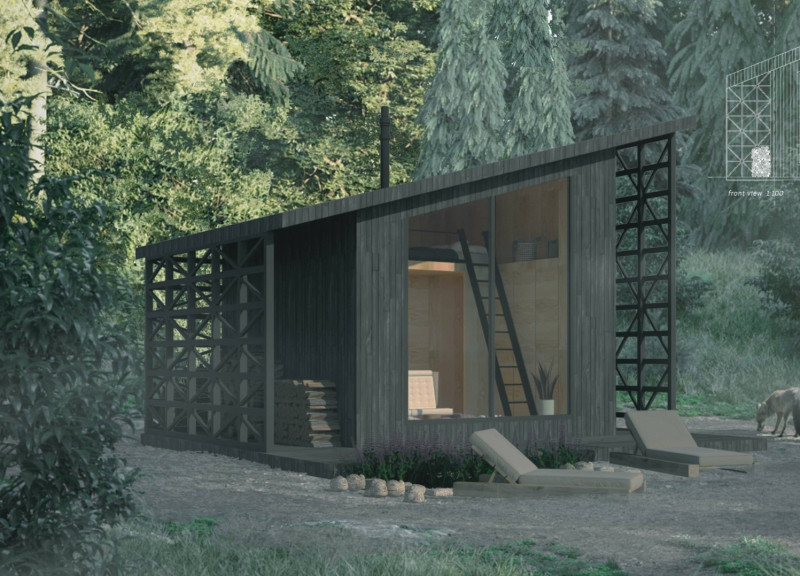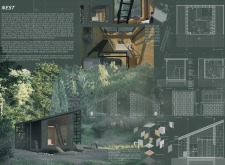5 key facts about this project
The microhome residence offers a practical solution for those seeking a sustainable lifestyle. Located in diverse natural settings, it focuses on energy efficiency and effective use of space. The design prioritizes adaptability and aims to create a comfortable living environment while respecting the surrounding landscape.
Materiality
The building is primarily constructed from wood, chosen for its sustainable qualities and structural strength. The outer surface is clad with burnt wood, employing a traditional Japanese technique that enhances durability without the use of harmful chemicals. This process allows the wood to resist pests and weathering, contributing to the overall sustainability of the residence.
Insulation and Space Optimization
Biosporin serves as the insulation material, providing an ecological alternative to standard foam products. Made from the cultivation of specific fungi, Biosporin transforms wood waste into a polymer, improving energy efficiency while minimizing carbon emissions. Inside, the layout makes clever use of limited space, featuring adaptable furniture like foldable sofas with built-in tables, along with a gallery area that can function as a sleeping space.
Natural Light and Water Management
The design allows for abundant natural light through a glass façade on the southern side of the home. This technique brightens the interior and creates a welcoming atmosphere, reducing the need for artificial lighting during the day. Water management is also a critical aspect; the residence uses a rain drain chain to effectively direct rainwater, allowing it to absorb into the soil rather than collecting as runoff.
Energy Efficiency
Solar panels installed on the roof provide renewable energy, contributing to the residence's goal of self-sufficiency. This addition demonstrates a commitment to energy conservation and complements the overall focus on sustainability. The design emphasizes functionality while addressing resource management, ensuring that daily needs are met without excessive waste.
The architectural expression of the microhome showcases a careful balance of textures and forms. The contrast between the burnt wood exterior and the transparent glass wall creates a harmonious relationship between the inside and outside. These details enhance the living experience, making it both practical and visually pleasing.



















































